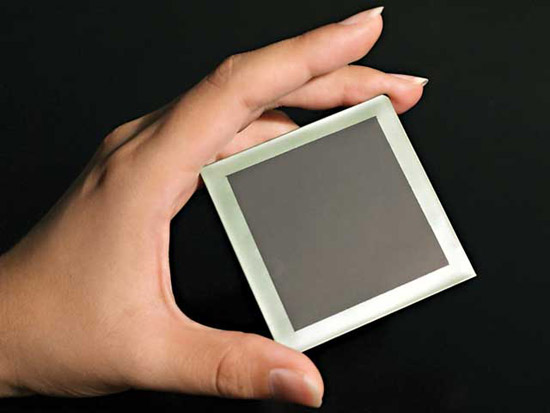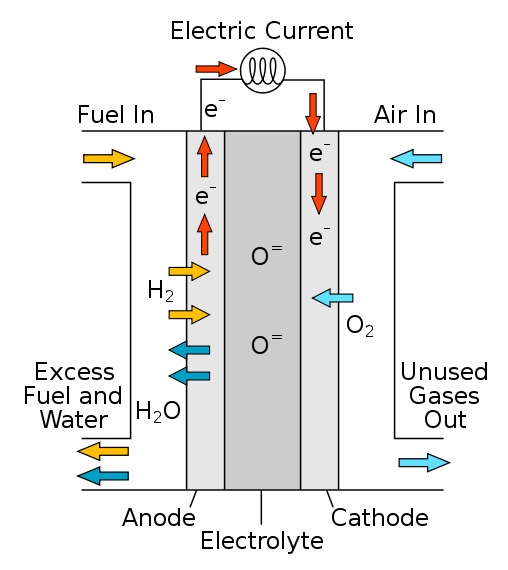
The fuel cell is slowly making its way into commercial products, and technology is refining them as they develop. But there is a new type of fuel cell being developed, and if you had a single word to describe it, it would be tiny.
The solid-oxide fuel cell (SOFC) has a power to size ratio that is 10 times greater than that of the standard hydrogen or alcohol fuel cell. The design allows for a number of fuels to be used, including gasoline. In the past, a SOFC required operating temperatures in excess of 1,600 degrees. However, new designs have dropped that requirement down to only 600 degrees, making them a much more viable alternative.
The SOFC still requires time to reach the 600 degree operating temperature, so it is not the type of engine that you can power up and take off with. However, coupling a SOFC with battery storage should give a vehicle that can be instantly driven while the SOFC is coming online to supplement the charge.

A SOFC consists of four layers, three of which are ceramics. The ceramics require high temperature to become electrically (and ionically) active, at which point reduction of oxygen into oxygen ions occur at the cathode. The ions can then diffuse through the solid oxide electrolyte to the anode, electrochemically oxidizing the fuel. A water byproduct and electrons are the net result of this, and the electrons flow through an external circuit, doing the required work. As the electrons enter the cathode the cycle repeats. To get more power, the four layers (which are only a few milimeters thick) are stacked as needed.
Imagine having a hybrid vehicle where the power plant to charge the batteries could literally fit in the glove box. It is estimated that a SOFC stack of four inches could power a typical automobile. It does open up the question of service – would it be possible to switch out the diminutive engine in case of a problem? Try that with your typical gas vehicle's engine.
The good news is that testing is set to start early next year, and perhaps we'll see the first SOFC powered vehicle sometime in the near future.
via
Solid Oxide Fuel Cell
A solid oxide fuel cell (SOFC) is an electrochemical conversion device that produces electricity directly from oxidizing a fuel. Fuel cells are characterized by their electrolyte material; the SOFC has a solid oxide or ceramic, electrolyte. Advantages of this class of fuel cells include high efficiency, long-term stability, fuel flexibility, low emissions, and relatively low cost. The largest disadvantage is the high operating temperature which results in longer start-up times and mechanical and chemical compatibility issues.
source:wikipedia



